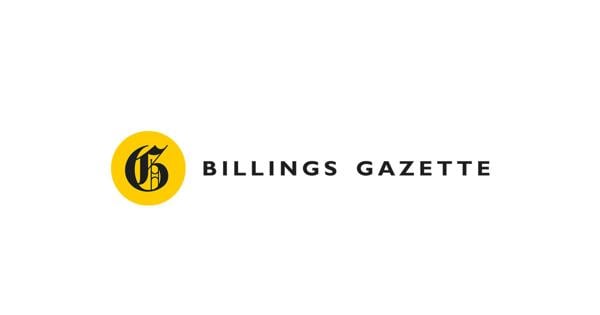“This is a big move forward in the equity department,” Bedey said. Initial calculations show the mills levied would be reduced in at least 69% of school districts and the burden will shift from poorer to more wealthy districts.
From the subcommittee that focused on local government, state Sen. Greg Hertz highlighted a proposal that would restrict local mill levy elections to dollar amounts instead of mill amounts. The argument for that approach is that if mill levies are fixed, when there’s a reappraisal that increases a home’s taxable value, a taxing jurisdiction can collect a lot more revenue. But if the level is set at a dollar amount, the mills will adjust to keep what’s collected at the same amount.
“It won’t allow for a big windfall and it’ll keep property taxes more stable for voters and taxpayers across the state of Montana,” Hertz said.
The Democrats’ plan Earlier this summer, Montana
People are also reading…
Democrats in the Legislature released their own slate of property tax proposals. The lawmakers, who are in the minority, said their package combined would reduce property taxes by $230 million and contrasted their pitches to the governor’s by saying their ideas are more targeted on lower and middle-income Montanans.
The Democrats’ version of a homestead exemption would exempt the first $50,000 in value of a home and $200,000 on a small business.
The second prong of the Democrats plan would reform how the state calculates taxes on residential properties so that those worth more are taxed at a higher rate
“Our plan would tax properties at different rates to give working folks the break they will need to make sure the owners of higher-priced homes pay their fair share,” said Senate Minority Leader Pat Flowers, of Belgrade, at a press conference in early July.
The third pitch from Democrats is a housing fairness tax credit aimed at people who have seen the value of their homes, and therefore corresponding taxes, increase far faster than their incomes. It would also apply to renters.
State Rep. Jonathan Karlen, of Missoula, used the example of a family earning $80,000 a year with a $4,500 tax bill who would see an $875 tax credit. As their property taxes increase, so would their credit, he said.
“Working together with the homestead exemption and the fair tax rates the tax credit will serve as a backstop to make sure that nobody falls through the cracks,” Karlen said in July.
Flowers said the Democrats’ proposal would be “basically a wash for counties and for schools.” He said there would be some costs to the state, paid from what he estimates will be a $700$800 million surplus coming into the next legislative session. He also said Democrats wanted to address loopholes in commercial and industrial taxes, and that could help balance the books.
Democrats have already filed bill draft requests for their proposals.
Democratic governor can-didate Ryan Busse also has his own pitch, one he says is a simple solution Gianforte and legislative Republicans overlooked last session. That’s to drop the residential property tax rate from 1.35% to 0.94%. Those figures come from a state Department of Revenue memo in late 2022 delivered to the Legislature’s Revenue Interim Committee in advance of each session. It shows the rates residential, commercial and agricultural land would need to be assessed to remain neutral.
“(It’s) simple to understand. It’s reduce taxes, reduce red tape and roll back the tax rate. And this is a simple thing that should have been done in the last legislative session, that was not done, that was purposely passed over,” Busse said in a press conference Thursday.
Former Democratic Gov. Brian Schweitzer said during the conference the Legislature not changing the rate led to big tax breaks for companies like NorthWestern Energy and Burlington Northern Santa Fe railway.
The extent of Busse’s plan at this point is to adjust the rates properties are classed, though he said he’d consider other good options brought before him if elected.
The rate reduction happened under four previous governors, Busse pointed out. Republicans, however, have argued that the state’s changing tax base means it’s not as simple as just adjusting the rates. They point to changes in the mix of properties, like lumber mill closures around the state, or counties that rely heavily on residential payers, and say a shift could leave other classes severely burdened.
Raph Graybill, Busse’s running mate, called that argument “absolute baloney” and said the rates functioned well after their last adjustment.
“The idea that returning to the tax situation … two years ago would run businesses out of the state or shut down agriculture is a complete mirage designed to distract people from the fact that there was an obvious choice here,” Graybill said. ” … How do we know it works? We all lived here two years ago.”
Schweitzer also criticized another proposal from the task force that would require new voter-approved levies have an affirmative vote of 60% or more to pass.
“If the roof caves in on your fire hall, you need 60% of the people to vote for (a levy to build a new one), not 50% plus one like us legislators and governors who got elected, you need 60% plus one,” Schweitzer said.
Busse said such a proposal was “about as anti-local control as it gets.”
There was also dissent noted in the task force’s final report, saying that “mill levy elections are already challenging to pass and further increasing the barriers to passage doesn’t give voters significant control of their local government budget choices.”
Holly Michels is the head of the Montana State News Bureau. You can reach her at holly.michels@ lee.net





